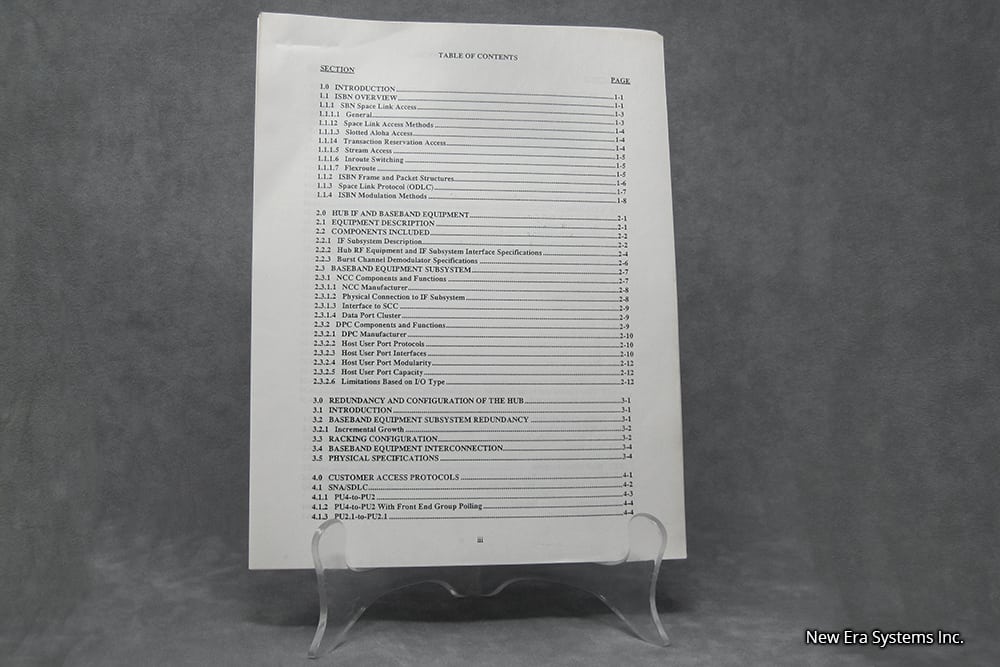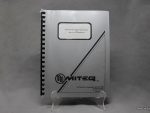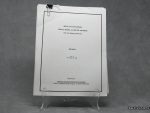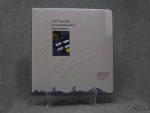Description
Hughes Network Systems ISBN Technical Specifications
This is a used hard copy manual, in good condition. As a sample we have reproduced one of the pages.
ISBN OVERVIEW
The Hughes Network Systems ISBN is a highly advanced Very Small Aperture Terminal (VSAT) transmission system that is capable of supporting interactive, batch, and Local Area Network (LAN) traffic between remote user equipment and host facilities, or between any two remotes. Optionally, voice communication can also be carried between remote phone sets or Private Branch Exchange (PBX) equipment and central PBX equipment connected to the hub earth station. Remote customer equipment is attached to a small satellite terminal called a Personal Earth Station TM (PESTM).
Of particular value to users is the ISBN’s ability to flexibly and efficiently use valuable satellite transponder capacity. This has been made possible through the use of high (128 kbps or 512 kbps) capacity Time Division Multiplexing (TDM) outroute channels (hub-to-remote) and medium (64 kbps or 128 kbps) speed inroute (remote-to-hub) channels, which are shared by multiple remotes using a Time Division Multiple Access (TDMA) technique. The use of high capacity outroutes allows for traffic growth and reduces the amount of hub earth station hardware as compared to the use of several lower speed outroutes. Similarly, the use of TDMA transmission techniques on the inroute enables a large number of remote terminals to share a single channel on the retum path. System efficiency and performance are further enhanced by HNS’ provision of several different inroute access techniques: contention access, transaction reservation, and dedicated streams. These access techniques are software defined and optimize the system’s price/performance for specific applications.
A feature called “flexroute” allows the PES, on a session basis, to dynamically choose in real-time the appropriate access technique based on offered load at that time.
The hub earth station incorporates a graphically based operator workstation that provides a wide range of centralized monitor, control, and diagnostic capabilities, including those requested by users:
- Real-time monitoring of the health and status of all network components.
Offline configuration definition.
Online, real-time modification of all local and remote parameters.
Graphical operator workstation.
Geographic color display with alarm locations.
Automated set-up and test of new and recommissioned PESs.
Commands to change VSAT frequency or mode of operation (e.g., port speed, protocols, port configuration, software version).
Map showing network locations and status (network location includes the users 6-digit site code. name, address, city, state, zip code, and store manager name and telephone number).







